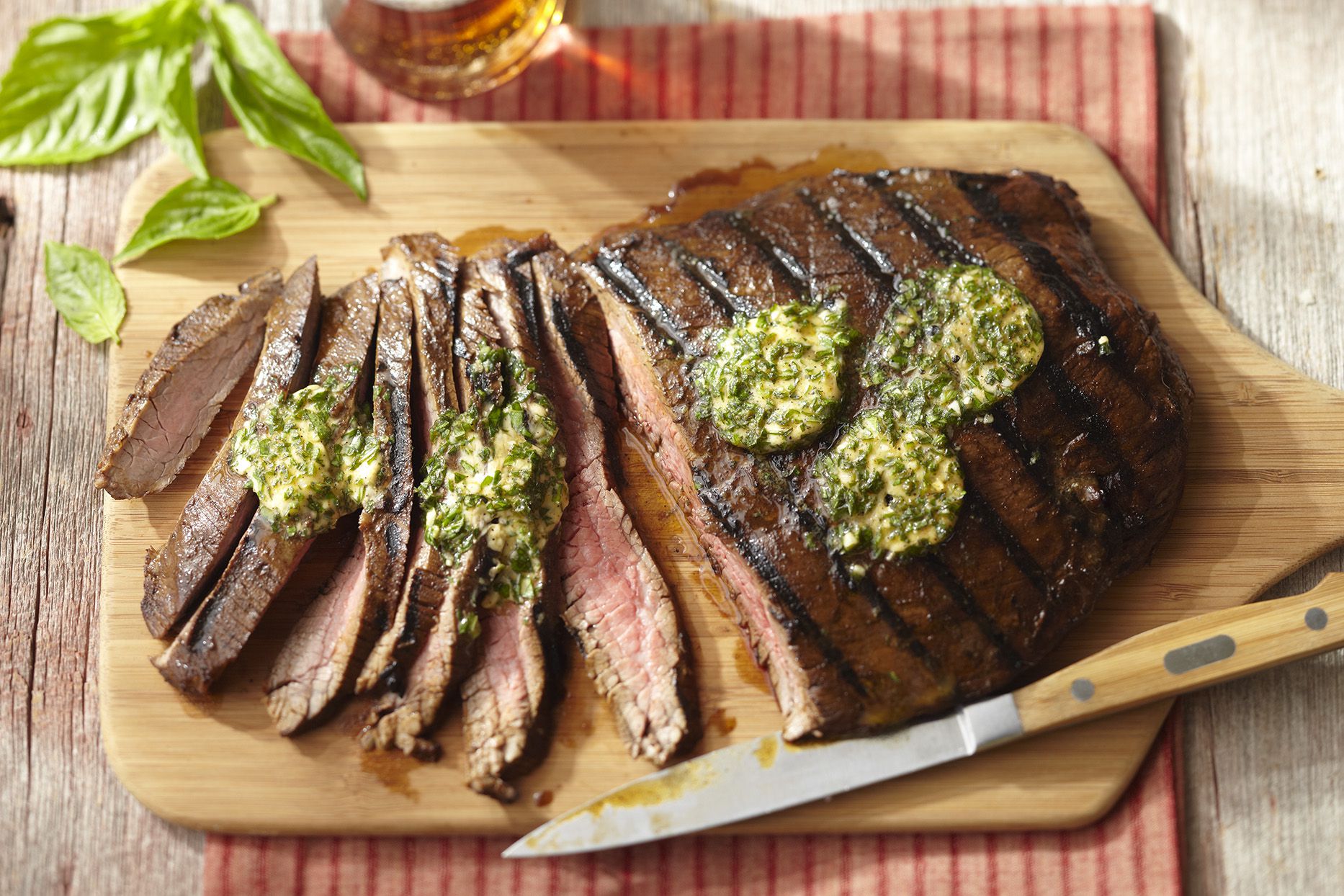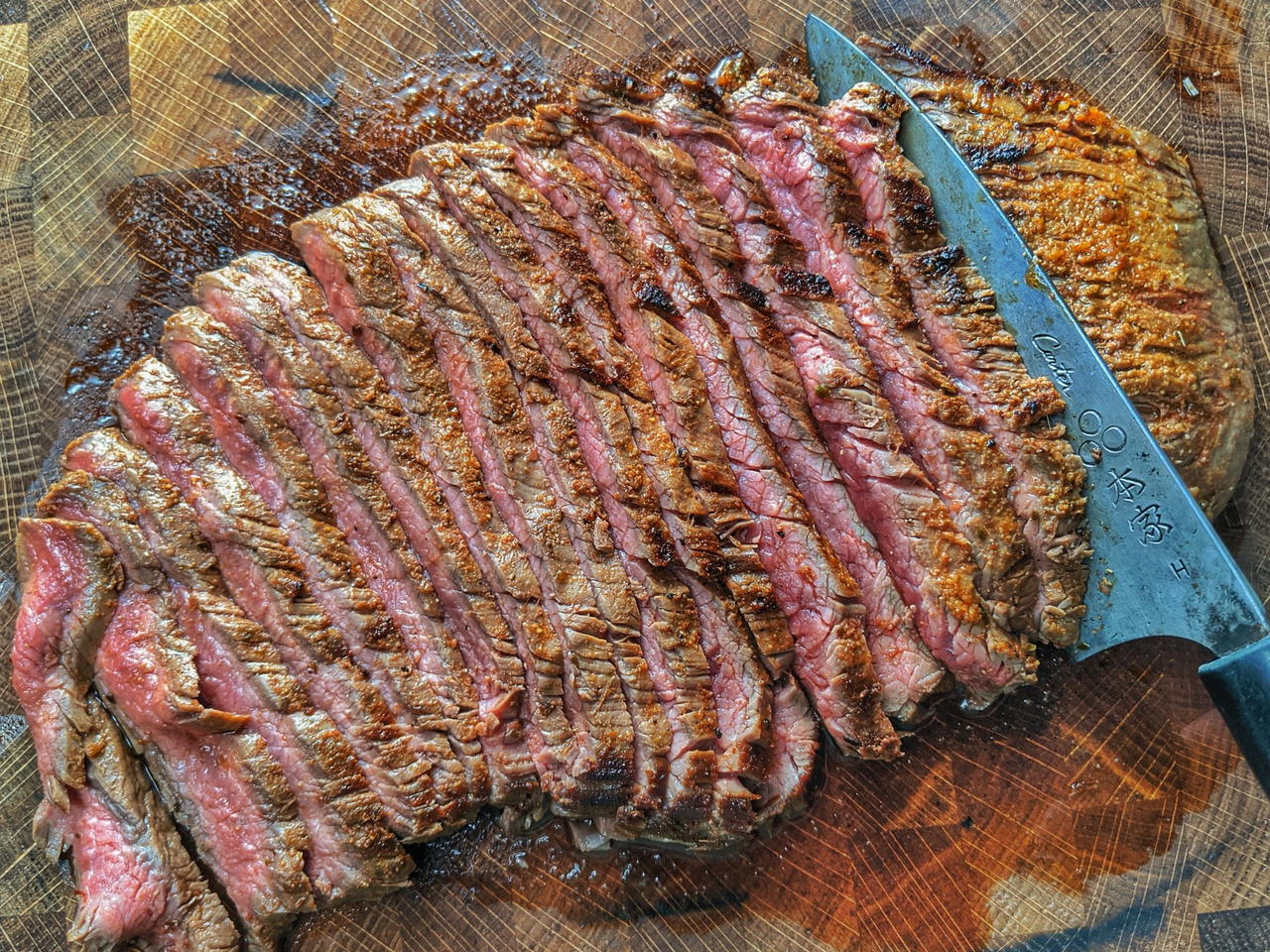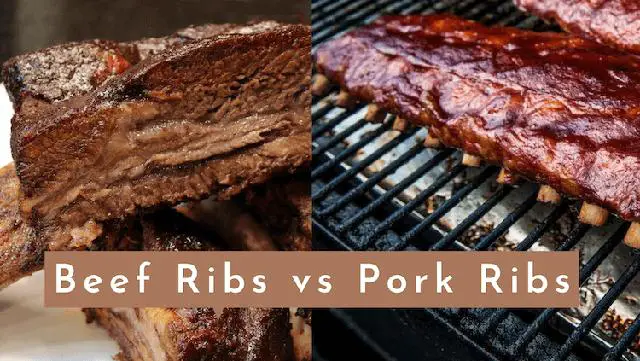
“Master the art of slicing flank steak with precision by cutting it against the grain. Discover how this simple technique can transform tough meat into tender and juicy bites, elevating your culinary skills to new heights. Unveil the secret behind achieving restaurant-quality results in your own kitchen.”
How to Slice or Cut Flank Steak: Identify the Grain
When it comes to slicing or cutting flank steak, it is important to identify the grain. The grain refers to the direction in which the muscle fibers run within the meat. By understanding and identifying the grain, you can slice the meat effectively and enhance the eating experience.

Start by examining the raw flank steak and observe the way in which the muscle fiber strands run. Typically, you will notice that they run horizontally across the meat. This horizontal direction indicates the grain of the flank steak. To slice against the grain, simply cut perpendicularly or horizontally to these muscle fiber strands.
Slicing against the grain is crucial because it shortens muscle fiber lengths, making chewing easier and improving tenderness. It is recommended to slice perpendicular to the grain rather than with it. While slicing on a bias (at a 45-degree angle) can further reduce fiber length and enhance presentation, it is not as important as slicing against the grain.
What is Meat “Grain”?
Meat “grain” refers to the direction in which the muscle fibers of the meat run. These muscle fibers are bundled together by connective tissues to form the muscle. The grain direction can be compared to the growth pattern of a tree in the wood or lumber industry. Identifying the grain of meat is important for slicing it effectively, as cutting against the grain helps to shorten muscle fiber lengths and make chewing easier.
The grain structure of meat, such as flank steak, is easier to identify when the meat is raw. Before cooking, observe the way in which the muscle fibers run. In the case of flank steak, for example, you can see that the muscle fiber strands run horizontally across the meat. To slice meat against the grain, simply cut perpendicular to these strands.
Identifying the Grain of Flank Steak
The grain structure of flank steak is very easy to identify. When looking at a raw flank steak, you can see the muscle fiber strands running horizontally across the meat. This direction is known as the grain direction. It is important to note the grain orientation before cooking the meat.
To identify the grain of flank steak, start by examining it in its raw state. Observe the muscle fiber strands and note their horizontal alignment. This can be done by following the dotted white line in an uncooked flank steak. The grain runs perpendicular to this line.
How to Cut Flank Steak Against the Grain
Cutting flank steak against the grain is an essential step to ensure a tender and easy-to-chew meat. Here’s a simple guide on how to cut flank steak against the grain:
1. Start by examining the raw flank steak and identifying the grain structure. Look for long strands of muscle fibers running horizontally across the meat.
2. Whether you’re slicing the meat raw or cooked, always slice perpendicularly or against the grain. In other words, slice the meat horizontally, perpendicular to the direction of the muscle fibers.
Slicing against the grain effectively shortens the length of muscle fibers, resulting in a more tender and enjoyable eating experience. It makes chewing easier and prevents tough and chewy bites.
For optimal results, you can also consider slicing on a bias (at a 45-degree angle) to further minimize fiber length and improve presentation. However, this step is not as crucial as slicing against the grain itself.
Remember that sear marks or grill marks on meat have no relation to its grain structure. Sear marks are formed by the Maillard reaction during cooking and can appear in any direction, regardless of the meat’s grain orientation.
By following these steps and cutting flank steak against the grain, you’ll ensure a deliciously tender and easy-to-enjoy piece of meat every time!

Why is Flank Steak Sliced Against the Grain?
When it comes to slicing flank steak, it is important to slice against the grain. This means cutting the meat perpendicular to the direction in which the muscle fibers run. The reason for this is to make the meat more tender and easier to chew.
By slicing against the grain, you effectively shorten the muscle fiber lengths, which helps break down the connective tissues and makes the meat more tender. Cutting with the grain would leave these muscle fiber strands intact and result in a tougher texture.
A quantitative analysis conducted by America’s Test Kitchen using a CT3 Texture Analyzer showed that it took significantly more force to cut into flank steak when sliced with the grain compared to slicing against it. This further emphasizes why it is important to slice against the grain for a better eating experience.
Are Grill Marks the Same as Meat Grain?
No, grill marks are not the same as meat grain. Grill marks are the result of the maillard reaction, which is a chemical reaction that occurs when amino acids and reducing sugars are heated together. These sear marks can form in any direction on the meat, depending on how it is placed on the grill grates or cooking surface. They are completely independent of the grain structure of the meat.
The maillard reaction causes the surface of the meat to brown and change color, making it difficult to visually identify the grain before cooking. This is why it is easier to determine the grain direction when working with raw meat. So, while grill marks may add aesthetic appeal to your cooked meat, they do not indicate anything about its grain structure.
In summary, cutting flank steak against the grain is essential for achieving tender and flavorful results. By slicing perpendicular to the muscle fibers, you ensure a more desirable texture and allow for better absorption of marinades or seasonings. This simple technique can elevate your dish, whether you’re grilling, stir-frying, or braising flank steak.
Learn More About Grilling
If you want to learn more about grilling, check out these other helpful resources!











